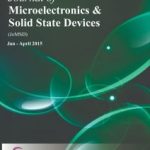
S. Sruthi Madhavan,

M. Yukendiran,

A. B. Jerfin Jeshua,

R. Sanjay,
- Assistant Professor Department of Artificial Intelligence and Data Science, Nehru Institute of Engineering and Technology, Anna University, Coimbatore Tamil Nadu India
- Student Department of Artificial Intelligence and Data Science, Nehru Institute of Engineering and Technology, Anna University, Coimbatore Tamil Nadu India
- Student Department of Artificial Intelligence and Data Science, Nehru Institute of Engineering and Technology, Anna University, Coimbatore Tamil Nadu India
- Student Department of Artificial Intelligence and Data Science, Nehru Institute of Engineering and Technology, Anna University, Coimbatore Tamil Nadu India
Abstract
“Sense Wear: Empowering Accessibility for the Visually Impaired ”This paper presents a novel approach to enhancing accessibility for visually impaired individuals through the integration of computer vision technology with wearable garments, specifically hoodies. The proposed system leverages object recognition algorithms to assist users in identifying and navigating their surroundings independently. By embedding a small camera and processing unit within the hoodie, real-time visual data is captured and analyzed to detect common objects and environmental obstacles. Through a user-friendly interface, auditory feedback is provided to the wearer, conveying information about the recognized objects, their locations, and relevant contextual details. The Integration of computer vision with wearable technology offers a discreet and hands-free solution for visually impaired individuals, empowering them to navigate their environments with increased confidence and autonomy. Experimental results demonstrate the effectiveness and usability of the proposed system in real-world scenarios, highlighting its potential to significantly improve the quality of life for individuals with visual impairments.
Keywords: Object Recognition, computer vision, visual Impairment, Image Processing, Object Detection, Feature Extraction, visual aids.
References
- Kanak Manjari, Madhushi Verma, and Gaurav Singal, “A Survey on Assistive Technology for Visually Impaired,” Internet of Things, vol. 11, 2020.https://www.sciencedirect.com/science/article/abs/pii/S254266052030024X
- Rabia Jafri et al., “Computer Vision-Based Object Recognition for the Visually Impaired in an Indoors Environment: A Survey,” The Visual Computer, vol. 30, pp. 1197-1222. https://link.springer.com/article/10.1007/s00371-013-0886-1
- Idris Jeelani et al., “Real-Time Vision-Based Worker Localization & Hazard Detection for Construction,” Automation in Construction, vol. 121, 2021. https:// www.sciencedirect. Com /science/article/abs/pii/S0926580520310281
- Afshan Latif et al., “Content-Based Image Retrieval and Feature Extraction: A Comprehensive Review,” Mathematical Problems in Engineering, vol. 2019, pp. 1-21, 2019.https://www.hindawi.com/journals/mpe/2019/9658350/
- Shervin Minaee et al., “Image Segmentation Using Deep Learning: A Survey,” IEEE Transactions on Pattern Analysis and Machine Intelligence, vol. 44, no. 7, pp. 3523-3542, 2021. https://ieeexplore.ieee.org/abstract/document/9356353
- Vidula V. Meshram et al., “An Astute Assistive Device for Mobility and Object Recognition for Visually Impaired People,” IEEE Transactions on Human-Machine Systems, vol. 49, no. 5, pp. 449-460, 2019. https://ieeexplore.ieee.org/abstract/document/8801898
- Wilson Luu et al., “A Holistic Model of Low Vision Care for Improving Vision‐Related Quality of Life,” Clinical and Experimental Optometry, vol. 103, no. 6, pp. 733-741, 2020. https://www.tandfonline.com/doi/full/10.1111/cxo.13054
- Mohamed Dhiaeddine Messaoudi, Bob-Antoine J. Menelas, and Hamid Mcheick, “Review of Navigation Assistive Tools and Technologies for the Visually Impaired,” Sensors, vol. 22, no. 20, pp. 1-29, 2022. https://www.mdpi.com/1424-8220/22/20/7888
- Usman Masud et al., “Smart Assistive System for Visually Impaired People Obstruction Avoidance through Object Detection and Classification,” IEEE Access, vol. 10, pp. 13428-13441, 2022. https://ieeexplore.ieee.org/abstract/document/9691323
- Abhishek Gupta, “Deep Learning for Object Detection and Scene Perception in Self-Driving Cars: Survey, Challenges, and Open Issues,” Array, vol. 10, 2021. https:// www. sciencedirect .com/science/article/pii/S2590005621000059
- Shuchang Xu et al., “Virtual Paving: Rendering a Smooth Path for People with Visual Impairment through Vibrotactile and Audio Feedback,” Proceedings of the ACM on Interactive, Mobile, Wearable and Ubiquitous Technologies, vol. 4, no. 3, pp. 1-25, 2020. https://dl.acm.org/doi/abs/10.1145/341181412.
- Iakovidis DK, Diamantis D, Dimas G, Ntakolia C, Spyrou E. Digital enhancement of cultural experience and accessibility for the visually impaired. Technological trends in improved mobility of the visually impaired. 2020:237-71.13.
- Vaidya S, Shah N, Shah N, Shankarmani R. Real-time object detection for visually challenged people. In2020 4th International Conference on Intelligent Computing and Control Systems (ICICCS) 2020 May 13 (pp. 311-316). IEEE.14.
- Tapu R, Mocanu B, Zaharia T. Wearable assistive devices for visually impaired: A state of the art survey. Pattern Recognition Letters. 2020 Sep 1;137:37-52.15.
- Hussan MI, Saidulu D, Anitha PT, Manikandan A, Naresh P. Object detection and recognition in real time using deep learning for visually impaired people. International Journal of Electrical and Electronics Research. 2022 May 13;10(2):80-6.16.
- Kuriakose B, Shrestha R, Sandnes FE. DeepNAVI: A deep learning based smartphone navigation assistant for people with visual impairments. Expert Systems with Applications. 2023 Feb 1;212:118720.17.
- Ozcan A, Cetin O. A novel fusion method with thermal and RGB-D sensor data for human detection. IEEE Access. 2022 Jun 22;10:66831-43.18.
- Calabrese B, Velázquez R, Del-Valle-Soto C, de Fazio R, Giannoccaro NI, Visconti P. Solar-powered deep learning-based recognition system of daily used objects and human faces for assistance of the visually impaired. Energies. 2020 Nov 21;13(22):6104.

Journal of Microelectronics and Solid State Devices
| Volume | |
| Received | July 3, 2024 |
| Accepted | July 12, 2024 |
| Published | July 28, 2024 |

